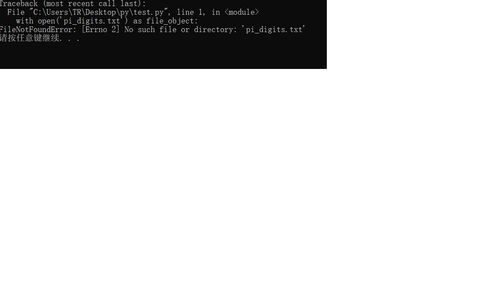Unlocking the Secrets of Text Files: How to Open and Decode with Python
Have you ever found yourself staring at a text file, wondering how to open it and decode its contents? If so, you’re not alone. Python, with its robust set of libraries and modules, offers a straightforward way to open and decode text files. In this article, I’ll guide you through the process, step by step, ensuring you’re equipped to handle any text file you encounter.
Understanding Text Files

Before diving into the technicalities, it’s essential to understand what a text file is. A text file is a file that contains plain text, which can be read and interpreted by humans. These files are typically used for storing data, code, and other textual information. However, not all text files are created equal. They can come in various formats, such as ASCII, UTF-8, and others, each with its own set of encoding rules.
Python’s Open Function

Python’s built-in `open` function is the cornerstone of opening text files. It allows you to open a file and read its contents. The basic syntax is as follows:
open(filename, mode)Here, `filename` is the name of the file you want to open, and `mode` specifies the mode in which you want to open the file. The most common modes are:
| Mode | Description |
|---|---|
| r | Read mode (default) |
| w | Write mode |
| a | Append mode |
| r+ | Read and write mode |
| b | Binary mode |
For opening a text file for reading, you would typically use the `r` mode. However, it’s important to note that the default mode is `r`, so you can omit it if you prefer.
Decoding Text Files

Once you’ve opened a text file, you may encounter encoding issues. Encoding refers to the way characters are represented in a file. For example, ASCII uses a single byte to represent each character, while UTF-8 can use up to four bytes. Python provides a `decode` method to handle these encoding issues.
Here’s an example of how to open and decode a text file:
with open('example.txt', 'r', encoding='utf-8') as file: content = file.read() print(content)In this example, we’re opening a file named `example.txt` in read mode with the `utf-8` encoding. The `with` statement ensures that the file is properly closed after we’re done with it. The `read` method reads the entire content of the file, and we print it out.
Handling Different Encodings
Not all text files use UTF-8 encoding. Some may use ASCII, ISO-8859-1, or even a custom encoding. To handle different encodings, you can try opening the file with different encodings until you find one that works. Here’s an example:
encodings = ['utf-8', 'ascii', 'iso-8859-1']for encoding in encodings: try: with open('example.txt', 'r', encoding=encoding) as file: content = file.read() print(f"Content decoded with {encoding}:") print(content) break except UnicodeDecodeError: print(f"Failed to decode with {encoding}. Trying next encoding...")In this example, we try opening the file with three different encodings. If a `UnicodeDecodeError` occurs, we catch it and try the next encoding until we find one that works.
Reading Lines
Reading the entire content of a file at once may not always be the best approach, especially for large files. Instead, you can read the file line by line using a loop. This allows you to process the file in smaller chunks, which can be more efficient and easier to manage.
Here’s an example of how to read





